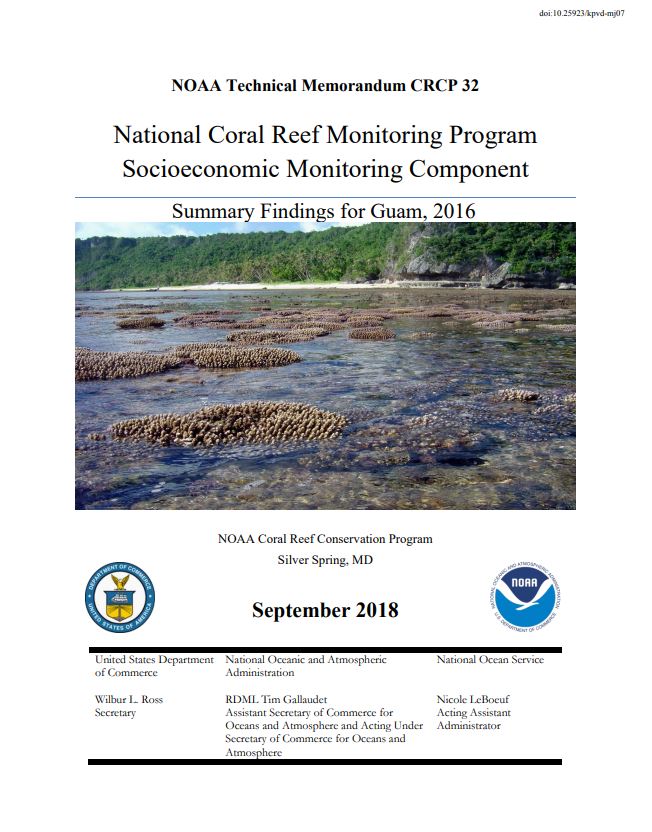
The National Coral Reef Monitoring Program (NCRMP) recently published human dimension information related to Guam’s coral reef resources. As part of its mission, NCRMP is responsible for gathering and monitoring a collection of socioeconomic indicators in the seven priority U.S. coral reef jurisdictions.
Household surveys from February to July of 2016 revealed that Guam residents generally supported a range of potential marine management policies and regulations (such as permit and certification requirements for water sports tour operators, and size limits for certain fish species), and suggested moderate familiarity with the various threats faced by coral reefs (such as pollution, overfishing/harvesting, and climate change). Guam residents indicated that they participate in beach recreation and swimming most frequently, and 30 percent of residents participate in fishing or gathering of marine resources. Perceptions of coral reef health and water quality vary across the island: one third of the population felt that the amount of coral in Guam is “good,” whereas another third believed that it is “bad.” In contrast, 57 percent thought ocean water quality is “good.” Thirty-eight percent of residents thought the amount of coral has gotten worse over the past ten years, but when asked how the condition of marine resources will change over the next 10 years, nearly half indicated that they believe conditions will improve.
These findings represent the baseline assessment for future socioeconomic monitoring of Guam’s coral reefs, and they will feed into composite indicators that will detail the status of Guam’s coral reef adjacent communities in relation to the other U.S. coral reef jurisdictions. Surveys will be repeated in each U.S. coral reef jurisdiction after the completion of a full monitoring cycle, approximately once every five to seven years.
To access and download the full publication, please visit: https://www.coris.noaa.gov/activities/guam_socio/.
